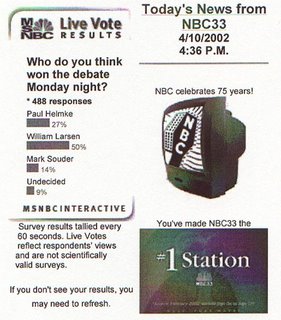U.S. Savings Rate was a Negative One Percent in 2006
It was reported on Thursday that the savings rate for 2006 was a negative one percent. This is the fifth time in 74 years that the savings rate has been negative for an entire year. There were two times in the 30’s 1932 and 1934 when unemployment was 20%. My question for years has been, so what. Is the savings rate a measurement of any value?
What is the savings rate? According to the government it is the net of all income minus the net of all expenses by all entities (government, companies, individuals). Let us look at an individual savings rate. Theoretically between ages 16 and retirement age, the person should be saving. They do this in the hope of achieving a balance sufficient to provide their needs in retirement. During retirement what is a person’s savings rate? Possibly in the first few years the individual may be saving, but most likely by the end of the fifth year, the individual is in spending slightly more than they save. During the course of a life time theoretically the individual has a net savings rate of zero. Everything that is saved during working years is spent during the retirement years.
With that stated, what is the theoretical savings rate of the United States or for that matter any country? We know there are about 160 million workers who for the most part create more than they spend. We also know there are about 40 million retirees. Assuming retirees take 42% of life time indexed wages from workers in the form of Social Security, another 2.9% of wages in the form of Medicare taxes and with drawl from savings to live on. There is a point at which the savings rate will go negative. In fact it must go negative in the case of the United States.
A boom begets a boom and a bust begets a bust. About every 20 years the births per year increase and then begin to decrease. Because people work for 45 years and retire for about 20 years, we have a natural wave of up and downs. With a decreasing birth rate per woman, the ups and downs are flattening out and making the last up more pronounced.
If there are four workers for every retiree, then each worker who is supporting a retiree at 70% of their pre retirement income must contribute each one fourth of the 70% just to be at a zero percent savings rate. Now this will change with over sea's investments. However, in this simple analogy I think it is clear that a negative savings rate should be expected.
Now for the bad news. Because Social Security and Medicare are both pay-as-you-go programs and are not funded, we have a problem. Had these programs taxed the current retirees sufficiently to fund their own benefits, then we would be drawing down on stored wealth. But because they were not funded using accrual accounting, we have nothing to draw down but our savings rate of current workers. This means the national savings rate will only get worse.
In my opinion there should be several savings rates. One for those who are working. This will indicate how well current workers are preparing for their future retirement. The other is the negative savings rate of retirees. This will indicate how fast accumulated wealth for retirement is being consumed.



2 Comments:
Darn fine post...and getting more apropos to *me* as I near that "magic" age...lol!
This is akin to when the gov't "says" the UNEMPLOYMENT RATE has DROPPED....all that REALLY means is that people fell off the dole because their allotments have run dry. So the numbers become vague (at best).
Overseas investments play one part of this, as do duel-citizenships, people working overseas, and the like.
One part to Social Security I would have "liked" to have seen would have been to take the money placed into it gathering INTEREST SOMEWHERE...! That would have seemed to ensure plenty of funds for the boomers when they come of age (as they are starting to now).
It's a shame we have more and more of my generation inching inexorably closer to that "living hand-to-mouth" gig...
Whatever savings my wife and I manage is eaten away by all these "variables" (aside from the usual monthly costs which we can always plan for) such as car repairs, house repairs, increased taxes (a pet peeve of mine), and, as living in my part of town will attest (the SE side) you will invariably have some "unkown" factor which can never be predicted...only eventually expected.
Very well explained, Bill. I get it, and I never studied this stuff in college...LOL!
B.G.
Thank's B.G., I have written this line of reasoning many times over the years. Each time I think I get a bit better at explaining it. Pass it on. We need to start busting the myths before we all drown.
As for setting aside a workers social security tax into some income producing asset, this was the original plan. The problem was identified back in 1943 before congress. A.J.Altmyer, 1st Social Security commisioner and author of the Social Security Act, testified before congress that social security's 2% payroll tax was totally too low. SS already had a $16.5 billion present value shortfall after paying benefits for less than three years. The payroll tax should be more like 8%. It did not reach this until 1967!
Go to my web site and select "Social Security" and select "Social Security: What Went Wrong?
www.justsayno.50megs.com/pdf/social_security.pdf
Post a Comment
<< Home